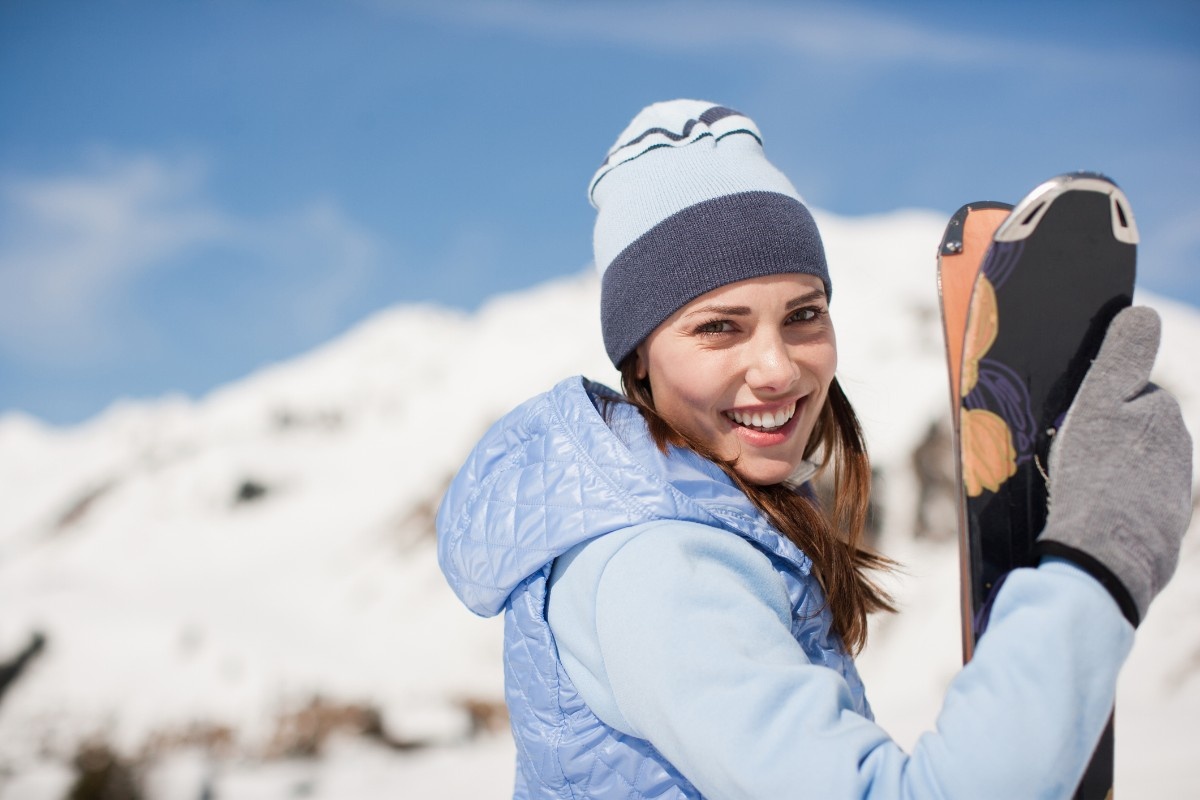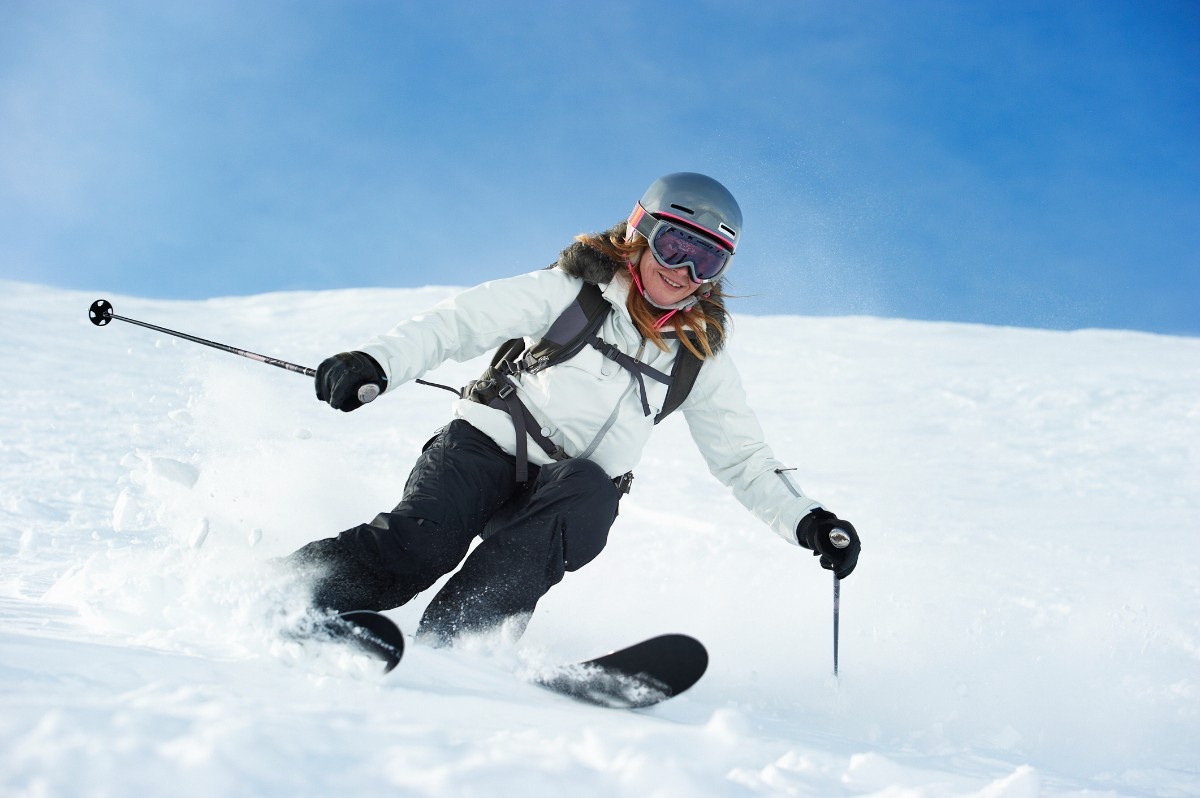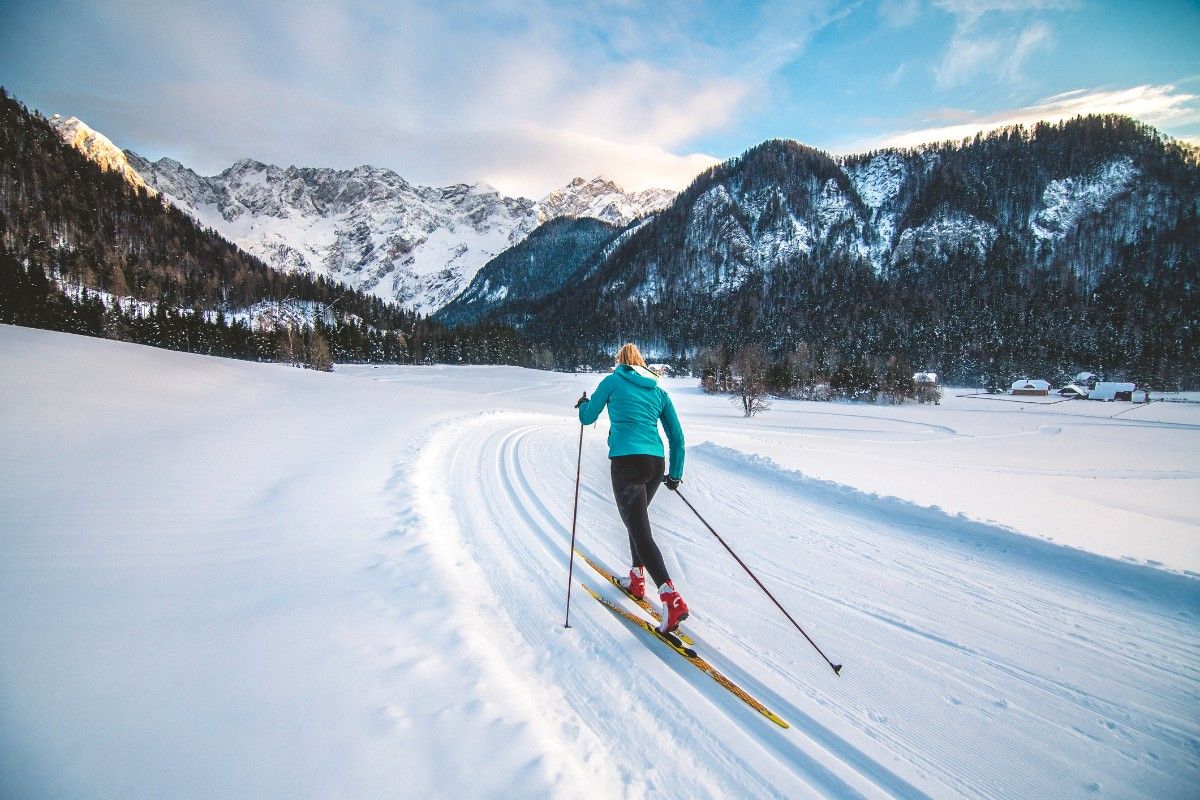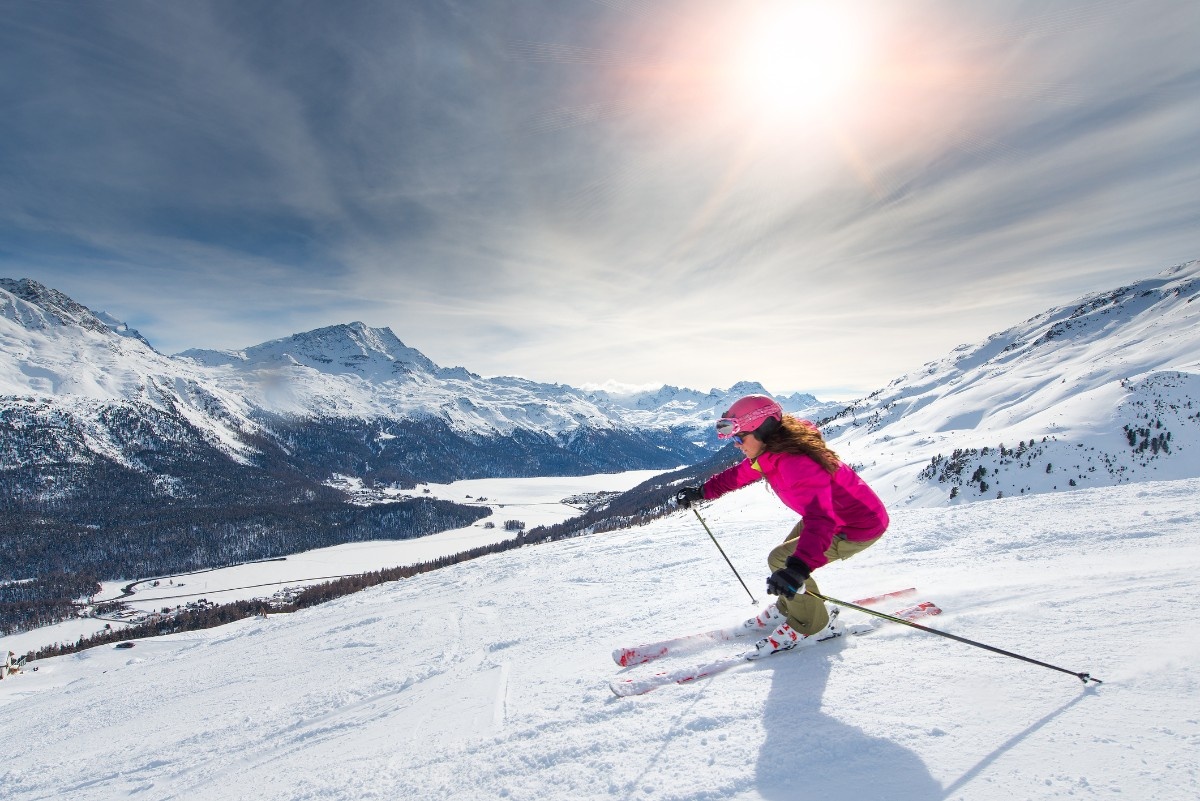Women's Ski Jackets: A Guide
Understanding the Basics of Women's Ski Jackets
The Anatomy of a Women's Ski Jacket
Women's ski jackets are sophisticated pieces of outdoor gear designed to protect against harsh winter conditions while allowing freedom of movement. The anatomy of a ski jacket comprises several key components, each serving a specific purpose. The outer shell is typically made from synthetic materials like polyester or nylon, often treated with a durable water repellent (DWR) coating to help water bead off the surface. This outer layer is crucial for protecting against wind and moisture, forming the first line of defence against the elements.
Beneath the outer shell, you'll find the insulation layer, which provides warmth. This can be either down or synthetic fill, each with its own advantages. Down insulation, usually from goose or duck feathers, offers an exceptional warmth-to-weight ratio and is highly compressible, making it ideal for very cold, dry conditions. However, down loses its insulating properties when wet. Synthetic insulation, on the other hand, is made from polyester fibres designed to mimic down's properties. While not as warm or compressible as down, synthetic insulation retains its insulating properties when damp, making it a more versatile choice for varied conditions.
The innermost layer of a ski jacket is the lining, which contributes to comfort and can aid in moisture management. Many ski jackets for women also incorporate a breathable membrane between the outer shell and the insulation. This membrane allows water vapour to escape while preventing external moisture from entering, helping to regulate body temperature and prevent overheating during active skiing.
Essential Features of Women's Ski Jackets
Women's ski jackets come with a variety of features designed to enhance performance and comfort on the slopes. A powder skirt is a common feature, consisting of an elasticated piece of fabric that fits snugly around the waist to prevent snow from entering the jacket if you fall. Many jackets allow this skirt to be attached to your ski trousers for a seamless barrier against snow. Hoods are another essential feature, ideally adjustable and large enough to fit over a ski helmet. Some jackets offer detachable hoods for versatility.
Ventilation is crucial for regulating body temperature during active skiing. Many jackets include zippered vents, often under the arms or on the chest, which can be opened to release excess heat and moisture. Pockets are a key consideration in ski jackets women designs. Look for a variety of pockets, including hand-warming pockets, chest pockets for small items, and internal pockets for valuables. Many modern ski jackets include a dedicated pocket for a ski pass, typically on the sleeve for easy access at lift gates.
Cuff design is another important feature. Adjustable cuffs can be tightened to keep snow out, and some jackets feature inner cuffs with thumb holes for additional warmth and to prevent snow from getting up your sleeves. Some high-end jackets incorporate technology-friendly features like media pockets with headphone ports, allowing you to listen to music while keeping your device protected. Safety features are also becoming more common, such as integrated RECCO reflectors, which make you searchable to rescue teams in the event of an avalanche.
Types of Women's Ski Jackets
Ski jackets for women come in various types to suit different skiing styles and conditions. All-mountain jackets are versatile options designed to handle a range of conditions and are suitable for most recreational skiers. These jackets typically offer a balance of warmth, weather protection, and breathability, making them a popular choice for resort skiing. Backcountry or touring jackets prioritise breathability and packability for those venturing beyond the groomed runs. These jackets are often lighter weight and may have fewer features to reduce bulk, catering to skiers who need to carry their gear and may be engaging in high-intensity activities like skinning uphill.
Shell jackets are another popular option, especially for those who prefer to layer. These jackets provide excellent wind and water protection but little to no insulation, allowing the wearer to adjust their warmth by adding or removing layers underneath. This makes them versatile for varying weather conditions and activity levels. Insulated jackets, on the other hand, provide built-in warmth and are ideal for cold conditions or for skiers who tend to get chilly easily. These can be filled with down or synthetic insulation.
Park and pipe jackets, favoured by freestyle skiers, often have a looser fit and may sacrifice some warmth for increased mobility. These jackets typically have a more relaxed, street-wear inspired style and may incorporate extra durability features to withstand frequent falls and contact with terrain park features. Understanding these different types of ski jackets women can help you choose the right jacket for your specific skiing needs and style preferences.
Top Brands and Their Offerings in Women's Ski Jackets
North Face: Innovation and Performance
The North Face is a renowned brand in the outdoor gear industry, known for its high-quality and innovative products. Their range of women's ski jackets exemplifies their commitment to performance and style. The North Face offers a variety of jackets to suit different skiing styles and weather conditions, from lightweight shells to heavily insulated options for extreme cold. One of their standout technologies is ThermoBall™ insulation, a synthetic alternative to down that provides excellent warmth even when wet. Many of their jackets also feature their proprietary DryVent™ technology, a breathable, waterproof coating that helps keep moisture out while allowing perspiration to escape.
The North Face ski jacket women’s line often includes features like powder skirts, helmet-compatible hoods, and multiple pockets for convenience on the slopes. Their jackets are designed with a women-specific fit, taking into account the female form for optimal comfort and performance. The North Face ladies ski jacket options range from sleek, minimalist designs to bold, eye-catching styles, catering to a variety of tastes. Many of their jackets are also designed with versatility in mind, suitable not just for skiing but for general winter wear as well.
The brand's commitment to sustainability is evident in their increasing use of recycled materials in their jackets, appealing to environmentally conscious skiers.
Spyder: Performance-Driven Design
Spyder is a brand deeply rooted in ski culture, known for its high-performance gear and sleek designs. The Spyder ski jacket women’s collection is extensive, catering to everyone from casual skiers to professional athletes. Spyder's proprietary technologies feature prominently in their women's range, including their Spylon™ DWR (durable water repellent) coating for enhanced water resistance. Many of their jackets incorporate 3M™ Thinsulate™ insulation, known for its excellent warmth-to-weight ratio.
The Spyder ladies ski jacket line often includes race-inspired designs, reflecting the brand's heritage in competitive skiing. These jackets typically offer a more form-fitting silhouette favoured by performance-oriented skiers. Features like strategic stretch panels and articulated elbows are common, allowing for unrestricted movement on the slopes. Spyder is also known for its bold use of colour and graphics, offering options that stand out on the mountain.
Their jackets often include thoughtful details like goggle wipes, internal media pockets, and removable powder skirts. For those seeking premium performance, Spyder's GORE-TEX® jackets offer top-tier weather protection. The brand's commitment to innovation is evident in their continual refinement of jacket designs and incorporation of new technologies to enhance on-slope performance.
Schöffel: Quality and Precision
Schöffel, a German brand with a long history in outdoor clothing, has made significant inroads in the ski market with their high-quality, technically advanced jackets. The Schöffel women’s ski jacket range is known for its attention to detail and use of premium materials. Many of their jackets feature Venturi Stretch fabric, which offers excellent waterproofing and breathability while allowing for unrestricted movement. Schöffel's women's ski jackets often incorporate PrimaLoft® insulation, known for its excellent warmth-to-weight ratio and performance in damp conditions.
The brand's jackets typically feature a more understated, elegant design aesthetic, appealing to skiers who prefer a classic look. Despite their refined appearance, Schöffel jackets don't skimp on technical features. Many include details like RECCO® reflectors for safety, adjustable and helmet-compatible hoods, and strategically placed pockets for convenience.
The brand's commitment to sustainability is evident in their use of recycled materials and their participation in the Fair Wear Foundation, which works to improve conditions for workers in garment factories. Schöffel's ski jackets are often designed with versatility in mind, suitable for both on-piste skiing and apres-ski activities.
Helly Hansen: Maritime Heritage on the Slopes
Helly Hansen, a Norwegian brand with roots in marine apparel, brings its expertise in battling harsh weather to the ski slopes. The Helly Hansen women’s ski jacket collection is known for its durability and superior weather protection. Many of their jackets feature their proprietary HELLY TECH® fabric, which offers excellent waterproofing and breathability. Helly Hansen's women's ski jackets often incorporate PrimaLoft® insulation, providing warmth without bulk. A standout feature in many of their jackets is the Life Pocket+™ technology, designed to preserve the battery life of your phone in cold conditions.
Helly Hansen jackets typically feature a more relaxed fit, appealing to those who prefer a bit more room for layering or freedom of movement. The brand's Scandinavian heritage is often reflected in clean, functional designs, though they also offer bold, colourful options for those who want to stand out on the slopes. Many Helly Hansen ladies ski jacket models include features like powder skirts, wrist gaiters, and multiple pockets for convenience.
The brand's commitment to performance is evident in their H2Flow™ technology, which allows for mechanical venting to regulate body temperature. Helly Hansen's roots in professional sailing translate to ski wear designed to perform in challenging conditions, making their jackets a popular choice among ski professionals and enthusiasts alike.
Key Features to Look for in Women's Ski Jackets
Insulation and Warmth
When it comes to women's ski jackets, insulation is a crucial feature that determines how warm you'll stay on the slopes. There are two main types of insulation: down and synthetic. Down insulation, typically from goose or duck, offers an excellent warmth-to-weight ratio and is highly compressible. It's ideal for very cold, dry conditions. However, down loses its insulating properties when wet, which can be a drawback in wetter climates. Synthetic insulation, on the other hand, is made from polyester fibres designed to mimic the properties of down. While not quite as warm or compressible as down, synthetic insulation retains its insulating properties when wet, making it a more versatile choice for varied conditions.
The amount of insulation in a jacket is often measured in grams, with higher numbers indicating more insulation and thus more warmth. However, more insulation also means more bulk, so it's important to consider your specific needs and the conditions you'll be skiing in. Some ski jackets for women use body mapping technology, which places different amounts of insulation in different areas of the jacket based on where you need warmth most.
It's worth noting that insulation isn't the only factor that contributes to warmth. The jacket's ability to block wind and trap warm air also plays a significant role. Features like a high collar, adjustable cuffs, and a drawcord hem can help seal out cold air and keep warmth in. Some jackets also incorporate reflective linings that bounce your body heat back to you, providing additional warmth without extra bulk.
For those who run hot or prefer to layer, a shell jacket without built-in insulation might be a good option. These jackets provide excellent wind and water protection, allowing you to adjust your warmth by adding or removing layers underneath. This versatility can be particularly useful if you ski in varying conditions or engage in high-intensity activities like backcountry skiing.
Waterproofing and Breathability
Waterproofing is another critical feature in women’s ski jackets. Skiing inevitably involves exposure to moisture, whether from snow, sleet, or your own perspiration. A good ski jacket should keep you dry in all conditions. Waterproofing is typically measured in millimetres (mm), indicating how much water pressure the fabric can withstand before leaking. For instance, a jacket rated at 10,000mm should withstand the pressure of 10,000mm of water before it starts to leak.
Many high-end ski jackets women feature Gore-Tex, a waterproof, breathable fabric membrane that's considered the gold standard in weather protection. Other proprietary waterproof technologies include Helly Hansen's HELLY TECH®, The North Face's DryVent™, and Columbia's Omni-Tech™. When shopping for a ladies waterproof ski jacket, look for sealed or taped seams, which prevent water from seeping through the tiny holes created during the sewing process.
However, waterproofing is only half the equation. Breathability is equally important, especially during high-intensity skiing. As you exert yourself, your body produces heat and moisture. A breathable jacket allows this moisture vapour to escape, preventing you from becoming damp and cold from the inside out. Like waterproofing, breathability is often measured numerically, typically in grams (g). For example, a breathability rating of 10,000g means that 10,000 grams of water vapour can pass through one square metre of the fabric in 24 hours.
Many jackets also feature additional ventilation options, such as pit zips or mesh-lined pockets, which can be opened to allow for increased airflow when you're working up a sweat.
Fit and Mobility
The fit of a women's ski jacket is crucial for both comfort and performance. Ski jackets typically come in regular, slim, or relaxed fits. A regular fit allows room for layering underneath, while a slim fit offers a more streamlined silhouette. Relaxed fits provide maximum freedom of movement and are popular for freestyle skiing. Consider your skiing style and personal preferences when choosing a fit.
When trying on ski jackets, wear the base layers you plan to ski in to ensure a comfortable fit. The jacket should allow you to move freely without feeling restrictive, especially when you lift your arms or bend over. The hem should be long enough to cover your lower back when you bend forward, and the sleeves should be long enough to cover your wrists when you extend your arms.
Many ski jackets for women incorporate stretchy fabrics or panels in key areas like the shoulders and underarms to enhance mobility. Articulated elbows are another feature that can improve range of motion. Some jackets also feature a dropped back hem for additional coverage when bending or sitting.
It's important to note that women's ski jackets are designed specifically to accommodate the female form. They typically feature a more tapered waist and additional room in the chest and hips compared to men's jackets. The length of women's ski jackets can vary, with some designed to sit at the hip and others extending to mid-thigh for additional coverage and warmth.
How to Choose the Right Women's Ski Jacket for Your Needs
Assessing Your Skiing Style and Conditions
The first step in choosing the right women's ski jacket is to consider your skiing style and the conditions you'll be facing most often. Are you a casual resort skier who sticks to groomed runs, or do you venture into the backcountry? Do you prefer high-intensity skiing or a more relaxed pace? The answers to these questions will greatly influence the type of jacket that's best for you.
For resort skiing on groomed runs, an all-mountain jacket is typically a good choice. These jackets are designed to be versatile, offering a balance of warmth, weather protection, and breathability. They often come with features like powder skirts and plenty of pockets for convenience. If you're into backcountry or touring skiing, you'll want to prioritise breathability and packability. Look for jackets with excellent moisture-wicking properties and ample ventilation options. Many backcountry skiers prefer shell jackets that can be easily layered for adaptability to changing conditions.
Consider the climate and conditions where you'll be skiing most often. If you primarily ski in very cold, dry conditions, warmth will be your top priority. In this case, a jacket with high-quality down insulation might be ideal. Look for jackets with a high fill power (700+) for maximum warmth without excessive bulk. For wetter climates or for those who ski in a variety of conditions, waterproofing becomes crucial. A jacket with a high waterproof rating (15,000mm+) and fully taped seams will keep you dry in most conditions. Synthetic insulation or a combination of down and synthetic might be preferable in these conditions, as they retain their insulating properties when damp.
If you ski in milder conditions or tend to run warm, breathability should be a key consideration. Look for jackets with high breathability ratings and ample ventilation options. A shell jacket that allows for easy layering can be a versatile choice in these conditions.
Balancing Performance and Style
While performance should be your primary concern when choosing a ski jacket for women, style is also an important consideration. After all, you'll enjoy wearing your ski jacket more if you like how it looks. Fortunately, with the wide range of colours and styles available in ladies ski jackets, you don't have to sacrifice style for function.
Consider how versatile you need your jacket to be. Do you want a jacket that can transition seamlessly from the slopes to apres-ski activities? If so, look for jackets with a more subtle, less technical appearance. Many brands offer ski jackets that look equally at home on the mountain or in town.
Colour is another important style consideration. Bright colours can make you more visible on the slopes, which can be a safety consideration, especially if you ski in areas with a risk of avalanches. On the other hand, more neutral colours might be more versatile if you plan to wear your jacket off the slopes as well.
When it comes to patterns, options range from solid colours to bold prints. Some skiers prefer to coordinate their jacket with their other ski gear, while others like to make a statement with a standout jacket. Remember that darker colours tend to absorb more heat from the sun, which can be an advantage on cold days but might be less desirable for spring skiing.
Considering Your Budget and Long-Term Value
Price is often a deciding factor when choosing a women's ski jacket. While it's possible to find budget-friendly options, investing in a high-quality jacket can pay off in terms of performance, durability, and long-term value. Consider how often you ski and how long you expect the jacket to last when deciding your budget.
High-end jackets from brands like North Face, Spyder, Schöffel, and Helly Hansen often come with advanced features and superior materials that can enhance your skiing experience. These might include high-performance waterproof membranes, premium insulation, and thoughtful design features. While these jackets come with a higher price tag, they often offer better durability and performance, which can make them a good investment for frequent skiers.
However, if you're a casual skier or are just starting out, you might not need all the advanced features of a high-end jacket. Many mid-range options offer good performance at a more accessible price point. Look for jackets that prioritise the features that are most important to you, whether that's warmth, waterproofing, or versatility.
When assessing the value of a ski jacket, consider not just the initial cost, but also how long the jacket is likely to last. A more expensive jacket that lasts for many seasons might offer better value in the long run than a cheaper jacket that needs to be replaced more frequently. Look for jackets with robust construction, high-quality materials, and good warranties.
Also, consider the jacket's versatility. A jacket that can serve double duty for other winter activities or everyday wear might offer better value than a highly specialised ski jacket that only gets used a few times a year.
Lastly, don't forget to factor in the cost of care and maintenance. Some high-performance jackets might require special cleaning products or professional care to maintain their performance features, which can add to the long-term cost.
Related articles

Let us know you agree to cookies
We use marketing, analytical and functional cookies as well as similar technologies to give you the best experience. Third parties, including social media platforms, often place tracking cookies on our site to show you personalised adverts outside of our website.
We store your cookie preferences for two years and you can edit your preferences via ‘manage cookies’ or through the cookie policy at the bottom of every page. For more information, please see our cookie policy.






